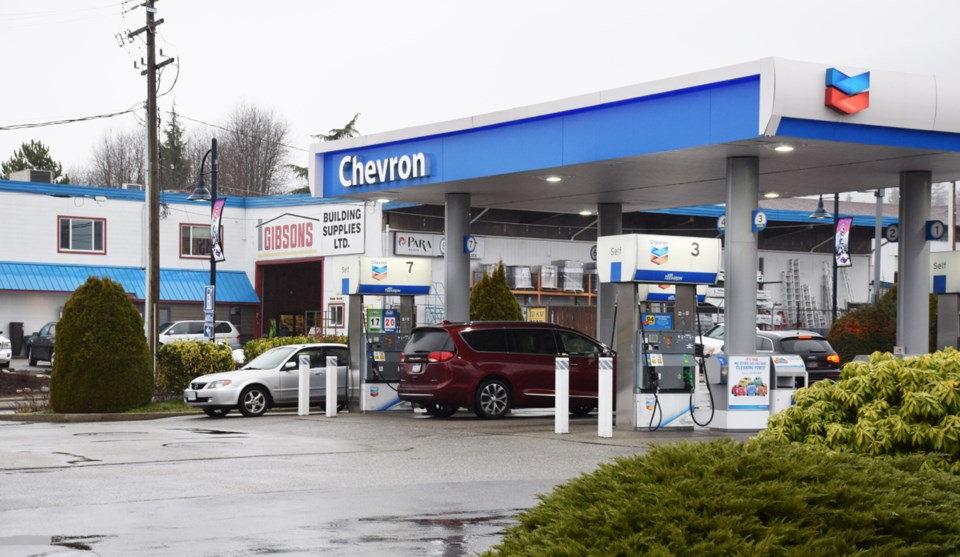The price of gas is continuing to spark debate on local social media forums and on the Coast Reporter letters pages, and now the Sunshine Coast Labour Council (SCLC) is wading in.
In a letter to the editor this week, SCLC president Ed Erickson claims the price of gasoline “has come to a point where some residents are having to choose between gas and groceries” and that Sunshine Coast residents “are being charged an unwarranted additional amount” compared to drivers in Vancouver, Vancouver Island and other parts of the province.
Just last March, when prices spiked across Canada, Sunshine Coast drivers were paying significantly less than Vancouver.
In Coast Reporter’s March 23, 2018 story (“Coast gas prices beat Vancouver’s despite hike”), analyst Dan McTeague, the founder of the price-tracking website GasBuddy.com, said: “Always assume there’s a 12 cent advantage or more for the Sunshine Coast, no matter what the price is in Vancouver.”
McTeague said this week that advantage still exists, although it’s likely now closer to 10 or 11 cents.
As of Jan. 23, the highest price for regular gas in Vancouver was the same as it was in Gibsons – 134.9 per litre. In Pender Harbour it was around 135.9, and in Sechelt it was sitting at 129.9.
“We are paying more for gasoline here because the companies can and have been getting away with it. It is time to act to lower our gasoline price,” the SCLC letter says. “We need assurance that prices will be based on the actual cost of gasoline.”
The Labour Council goes on to point out that total provincial taxes on a litre of gas in Vancouver, where a transit tax is included, are 11 cents higher and argue that transportation – which is done by barge – should only add another 2.5 to four cents per litre.
McTeague estimates local retailers are paying between 110 and 115 cents per litre to fill their storage tanks, meaning the rest of the price is the margin needed to cover expenses like wages, utilities and property taxes or rent and still make a profit.
“A 20 cent retail margin in Gibsons and roughly 15 cents in Sechelt is not far from what you’re paying in other cities where the retail margin is maximum 12 cents a litre,” McTeague said.
McTeague also said that while “cutthroat competition” is getting more common in bigger markets, it’s not finding its way into areas with smaller populations and fewer retailers, where the volume of gas sold is lower and it can take longer for a drop in wholesale prices to be reflected at the pump.
“I can give you examples in every city across Canada where the amount of money they’re making at the retail level is negligible and I’ve said, tongue-in-cheek, that unless you’re selling a lot of beef jerky you’re going to get the bank calling asking how the hell you plan to stay in business.”
Although the Labour Council letter doesn’t highlight the price differences between retailers on the Coast, it’s been a major theme in social media forums, including accusations of gouging and calls for a boycott of retailers who charge higher prices.
Comments like, “We need to boycott the gas stations in rotation. Gas on the Coast is way out of line” and “Keep the pressure up until prices drop 10 cents below Vancouver prices” have been typical.
Erickson said in his letter that the SCLC is “asking those who control the price on the Sunshine Coast for their explanation of their costs” and asking “residents to join with us and demand the end to the overpricing, which is based solely on being a captive market.”
McTeague said consumers deserve more transparency on fuel pricing, but they can get some insight by following the wholesale, or rack, prices which both Petro-Canada and Shell post online and understanding the tax breakdowns, which are available through Natural Resources Canada at www.nrcan.gc.ca/energy/fuel-prices/18885



